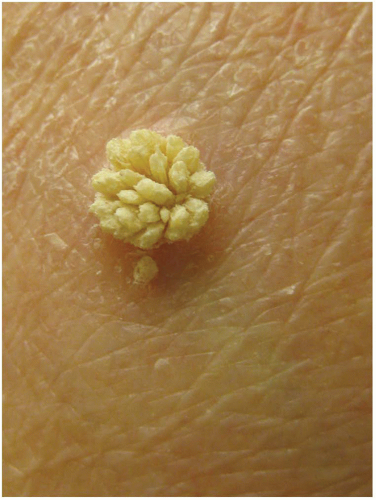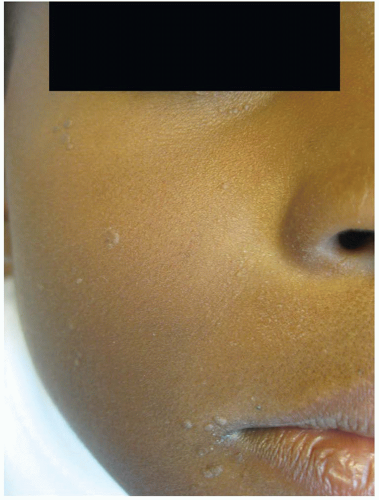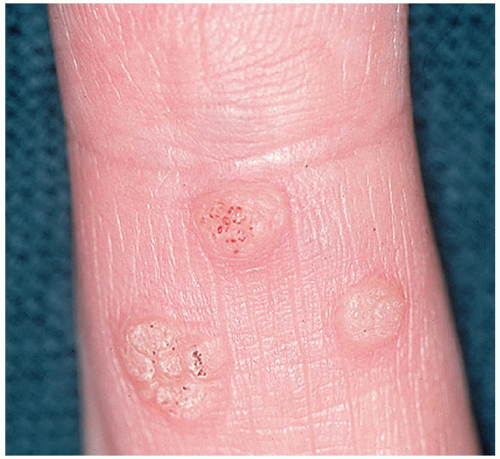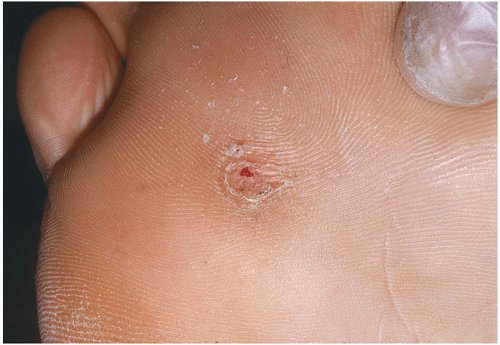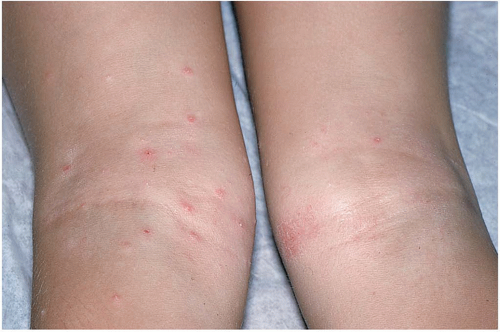THERAPY |
ADVANTAGES |
DISADVANTAGES |
CONTRAINDICATIONS |
COMMENTS |
First-line |
Salicylic acid (keratolytic) |
Available over the counter, inexpensive, easy application, effective, including plantar warts or thick lesions, nonscarring |
Macerates any skin where it is applied, reapplied if it gets wet, requires multiple applications, can cause tenderness |
Peripheral neuropathy, peripheral artery disease, nonintact skin or erosions, pregnancy |
Can be used in conjunction with cryotherapy |
Cryotherapy (thermal destruction) |
Effective in older children and adults, anesthesia is not necessary, great for warts on hands, safe in pregnancy and breastfeeding, fast, can treat multiple lesions and thick lesions |
Painful, can result in hyper- or hypopigmentation especially on dark skin tones, caution should be used in the treatment of facial warts, requires multiple in-office treatment by clinician, which can be expensive and inconvenient |
Cryoglobulinemia, cold agglutinins, cold urticaria |
Treatment on fingers and toes (especially with freeze-thaw-freeze cycle) may cause hemorrhagic bullae which are benign, use caution on the digits and near nerves (severe pain and neuropathy), cautioned use in dark skin tones, treatment of periungual warts may result in nail deformity; see chapter 24 for instructions on use |
No intervention |
No cost or risk of pain or scarring, two thirds of warts spontaneously resolve within 1-2 years |
Warts may grow or spread on self or transmission to others, psychosocial burden, pain, and bleeding especially on the hands and feet |
|
Patient education regarding transmission and prevention of autoinoculation |
Second-line (not evidence-based) |
Duct tape (occlusive) |
Inexpensive, easy to do at home, easy for children, pain-free |
Can be difficult to keep tape on, effectiveness is uncertain |
|
Cover with duct tape, leave on for 6 days, then soak and pare; leave uncovered overnight; then repeat cycle until resolved |
Cimetidine (systemic immune modulator) |
Available over the counter |
Many possible drug interactions |
See FDA recommendations |
Mostly anecdotal reports |
Cantharidin (blistering agent) |
Painless at time of application, useful for multiple lesions and in young children, no scarring |
In-office treatment only, blisters can cause discomfort, response varies, may need additional treatment with same or other modalities |
Face or genital mucosa |
Caution with use on digits, severe blistering can occur if applied incorrectly; see chapter 24 for instructions on use |
Third-line: If no improvement with above therapies repeated over several months, consider referral to dermatology for more aggressive treatment |
|
|
|

